Developers are the backbone of the mobile Internet ecosystem. They are tough and courageous. They adhere to the right values and believe that innovation can create value.
AppSo is also the same, we hope that those developers with valuable quality, and their products with flash points, can be seen by more people.
AppSo invites great developers every week to talk to them about interesting and moving stories in the process of developing products.
The fairy tale that I saw when I was young, the poetry I read when I was in school, the novel I read when I was in my leisure… The book is accompanied by us from young to adult. We grow up slowly, and reading is no longer a task that we must do every day, but a window into our understanding of the world. We have also gradually replaced thick books with more portable electronic devices.
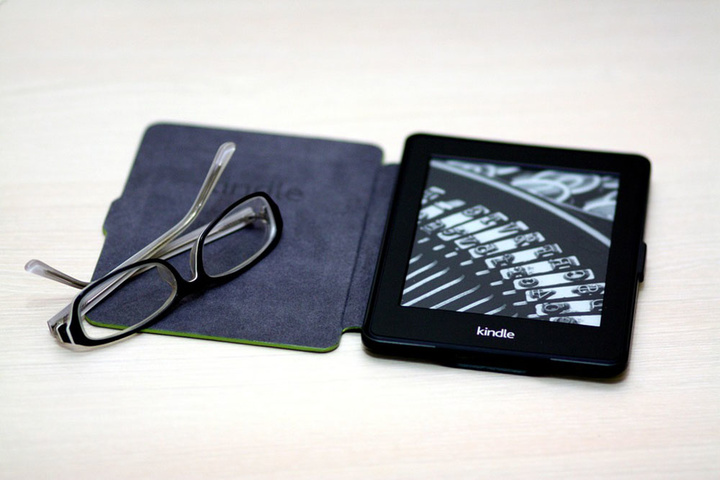
However, whether it is the Kindle or the “WeChat Reading” that is often seen in the circle of friends, there is no perfect book integration and editing function – the Kindle integrates the book summary into “your cut”. However, due to the slowness of the electronic ink screen, “WeChat Reading” simply integrates the part of the marking into the “Notes” column. Clicking will jump to the book, more like a bookmark.
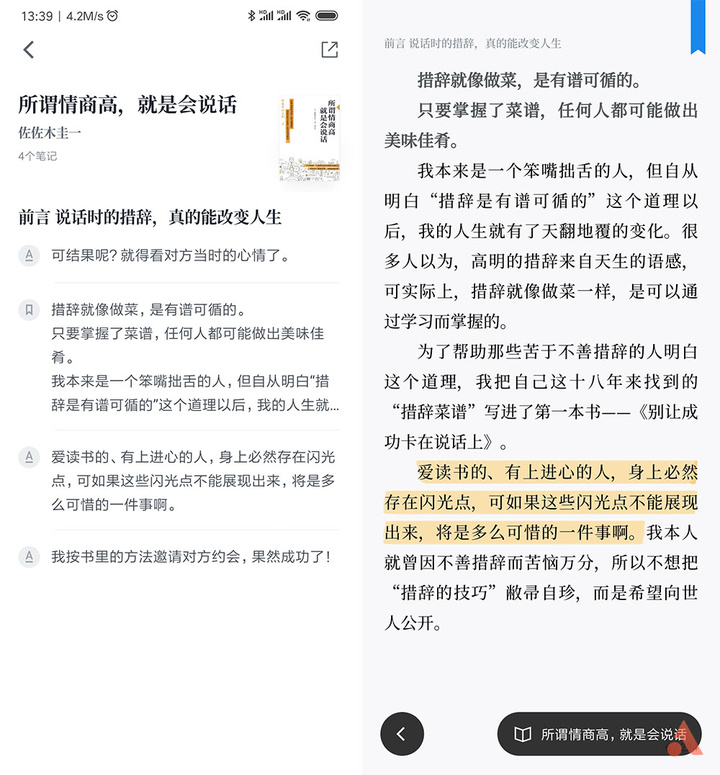
If you also have the habit of doing book picking and reading notes after reading, Knotes 2.0 is tailor-made for you.
As early as 2017, Knotes 1.1.0 was exclusively launched on AppSo. Two years have passed, and now Knotes has officially launched version 2.0, and it is the exclusive starter in AppSo today.
In this new version, Knotes 2.0 not only has a brand new interface, but also adds the “WeChat Reading” booklet import function, and officially has its Chinese name – “糯” notes.
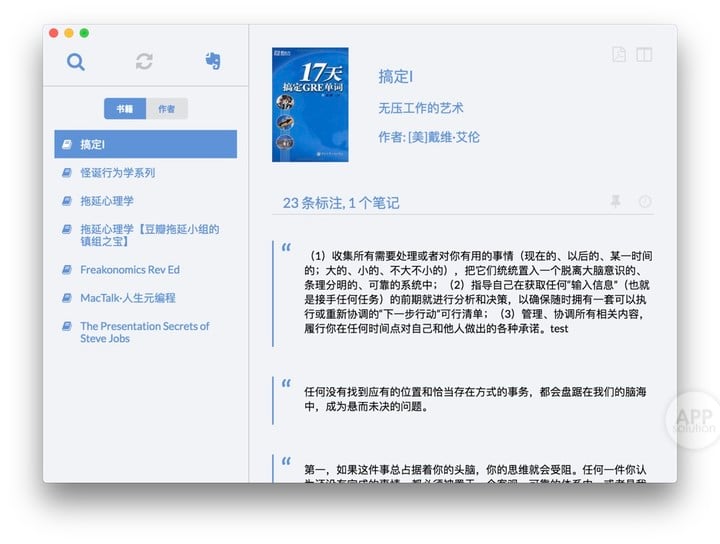
▲Knotes 1.1.0 interface
The eulogy note supports both Windows and Mac platforms and is an efficient and versatile note management tool. It can import the abstracts we made on the Kindle and WeChat Reading into the computer and store them in the cloud. We can also export the notes you took notes to the note-taking software such as Evernote and OneNote.

In the eulogy note, you can import your book into your computer in just a few simple steps. If you are using a Kindle, connect the Kindle to your computer via a data cable. In the “Settings→Import” section of “Comment Notes”, select the “My Clippings.txt” file in the Kindle folder.
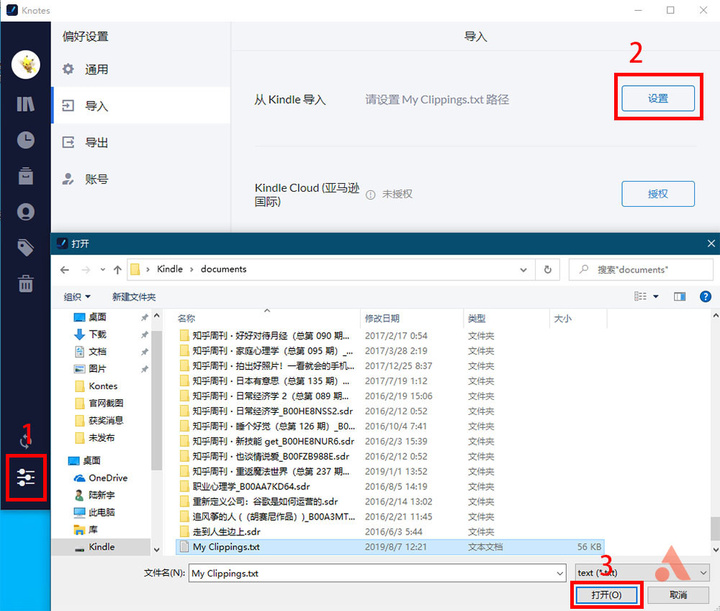
Next click on the sync button on the left, wait a little, all the books in the Kindle will be synchronized to the “sentence notes”, and the “sentence notes” will be based on the title, through the Bing search corresponding Book covers, you can also choose other covers according to your preferences.
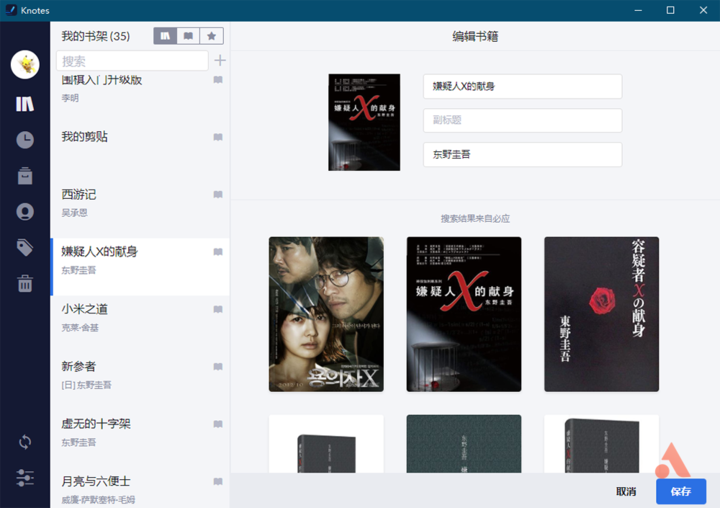
If you are using WeChat Reading, select the books you want to sync through “My → Notes”, click on the top right corner of the notes page, and then click “Copy to Clipboard”.
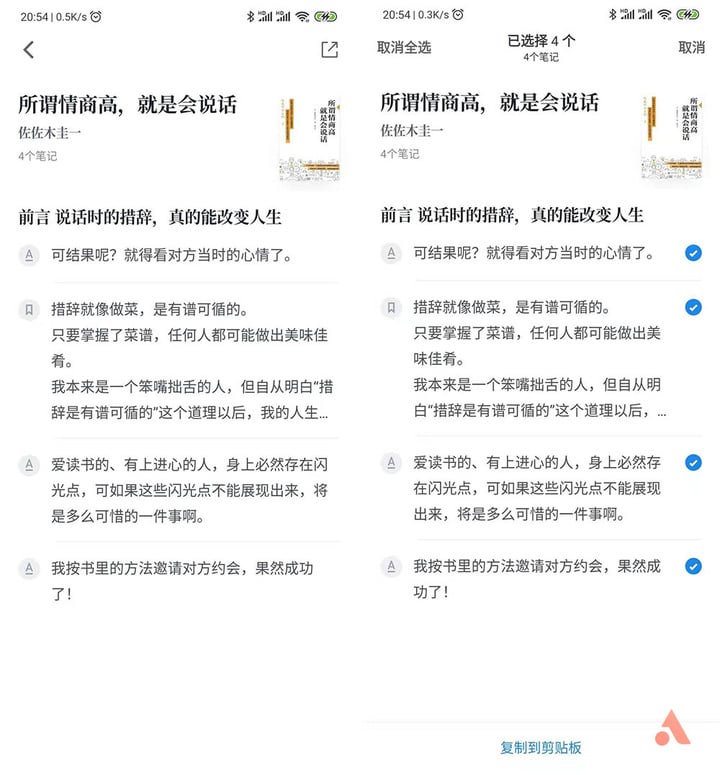
The copied book will be sent to the computer through QQ, WeChat, etc., and you can pick up the information in the note. If you are a Mac user, makeWith iOS’s Handoff feature, you don’t have to send a summary of your notes, it’s easy to copy and paste and sync your book between iPhone and Mac.

This way, the abstracts marked in WeChat Reading can be imported into the eulogy notes.
Imported the abstract, “The eulogy notes” has to play its true role, search, view, organize, and take notes on the contents of the book, all in one. First of all, you can sort and search the imported book extracts by time, book authors, etc.
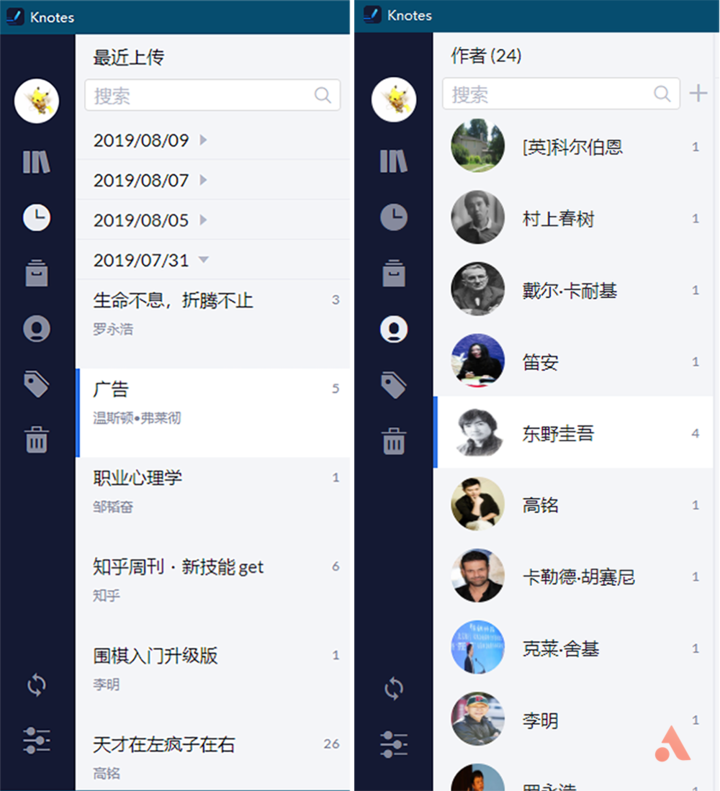
You can also make your favorite books into collections according to your needs, which is convenient for future query management.

Next, you can carefully taste each of the abstracts, add labels and reading insights to the abstracts, and adjust the contents of the abstracts. Do you feel that the notes you write are too boring and unfocused? Use the Markdown syntax to highlight your notes.
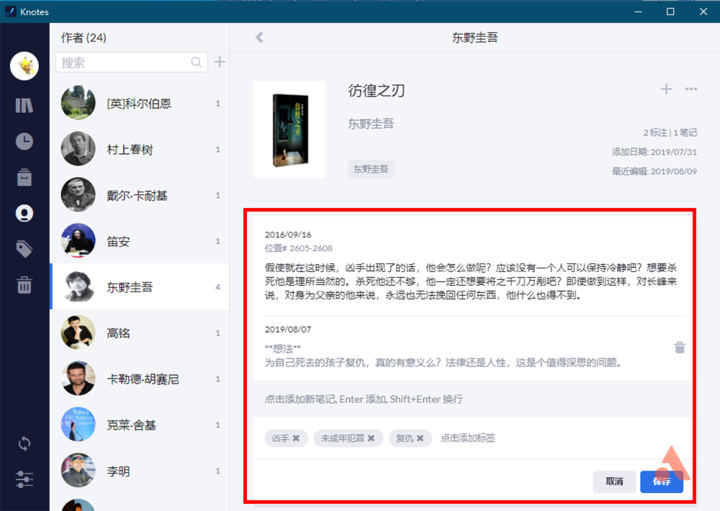
Organize the sentiment, of course, you can’t just show it to yourself. Click the “Share” button, you can generate a card by summing up and feeling, and scan the QR code next to it to share it with friends and send it to a circle of friends. Of course, you can also save in the image format and keep records.
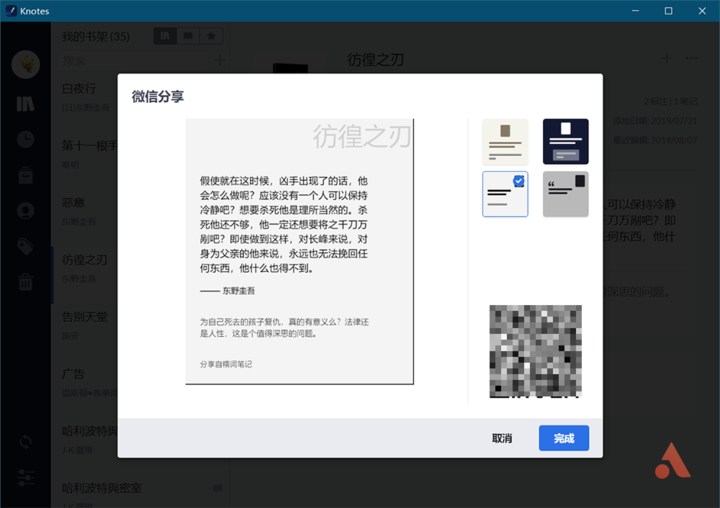
At the same time, the book also supports exporting documents in PDF, Markdown, and Txt formats.
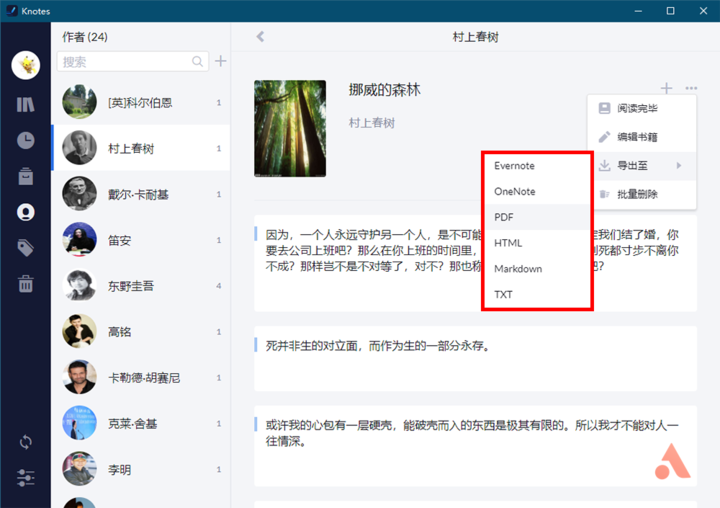
When you further read and organize the summaries, you can also export the contents of the book to OneNote or Evernote, view the contents of the book anytime, anywhere, or edit the book again.
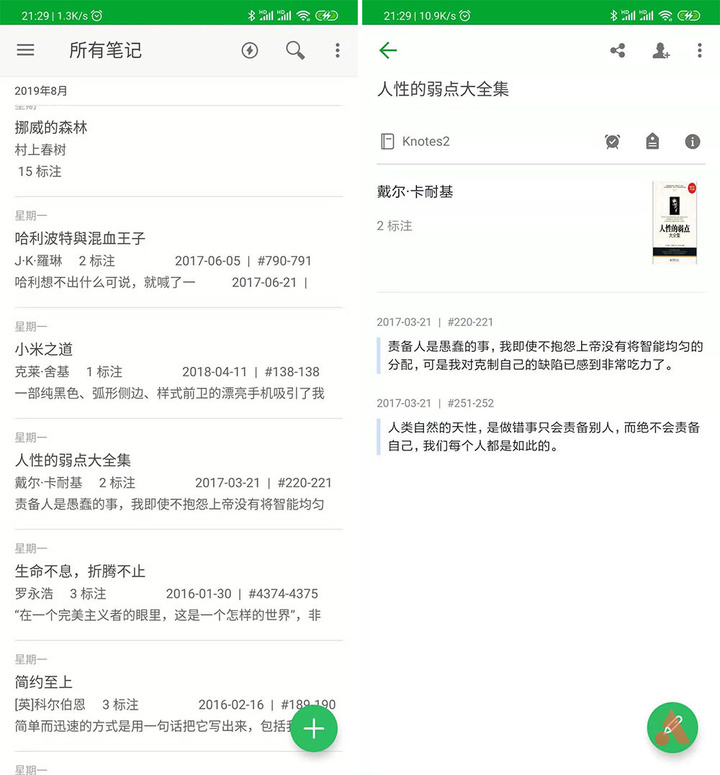
Import, think, edit, and export. The eulogy notes provide us with a comprehensive book summary program.
Knowing the eulogy team
Today, AppSo also invited the development team of “Comic Notes” to let him talk to you about the story of developing this app.
He Yizhen, now a Google engineer. Graduated from Beijing University of Posts and Telecommunications and the University of Southern California.
Lu Zhouxing, Rubrik Product Designer, former SAP User Experience Designer. Graduated from Beijing University of Posts and Telecommunications and Indiana University.
Zhang Chi, now a Google engineer. Graduated from Jilin University and the University of Southern California.
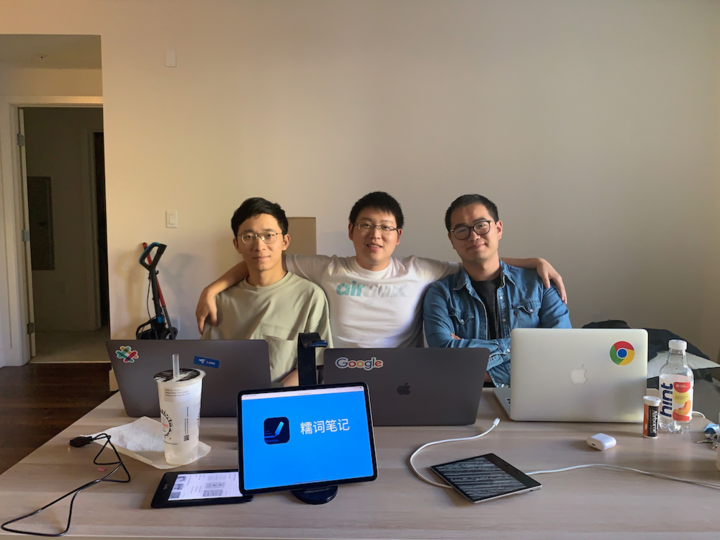
Introduce the eulogy in one sentence.
Knotes is an efficient and versatile reading note management tool that manages and reviews book summaries from different devices and exports and shares collated summaries.
This Knotes 2.0 version is upgraded to help solve the pain points?
Knotes 2.0 brings more classification, organization, and connectivity.
New reading status, reading, starring, recent import, etc., to help users better review and manage reading progress. The Favorites and Labels feature allows readers to better classify books and booklets to find a particular type of book summary faster.
Support for more import, export, share, and sync to OneNote, as well as sync data to the cloud, making Knotes 2.0 more connected and open.
What do you think is the main reason for forgetting after reading?
The main reason for forgetting after reading is that there is no timely review.
The Ebbings Forgetting Curve tells us that our short-term memory will be forgotten 56% after 1 day, and short-term memory will be strengthened into long-term memory, and then supplemented with time to review, it will become Long-lasting long-term memory. Knotes 2.0 helps users to digest books they read and learn by organizing, reviewing, sharing, and citing them.
Why would you think of developing such a markup tool?
I used to read books on the Kindle when I was a graduate student. I read interesting texts and wrote some feelings, but it is not so convenient to operate on the Kindle, so I thought of doing a character.The software that is aesthetically pleasing specifically manages reading notes.

What is the biggest challenge in the development process?
The biggest challenge is balancing your work and developing the relationship between Knotes and life.
Knotes 2.0 has a much higher complexity and completion than 1.0. At the beginning, I and Lu Zhouxing both conceived one stroke on paper. The design drafted several editions, and the implementation was also overwhelming. Later, my classmate Zhang Chi also joined the team to help develop and reduce stress.
We recorded 29 Sprints on Teambition, which is 58 weeks, which is a testimony of our discussions and developments in our spare time and holidays. When we meet each Sprint, we will buy milk tea, talk while drinking, and gather after the discussion to cultivate a team atmosphere and encourage each other.
What is your long-term plan for Knotes?
When doing Knotes 1.0, my vision for Knotes is to be the best reading note management tool, allowing readers to record, review, and apply reading notes anytime, anywhere.
The first step is to get through the platform. Knotes 2.0 has taken the step, cloud sync makes meWe also support Windows, Mac, and the Web. We will launch a mobile version around the Spring Festival this year, supporting iOS and Android.
The second step is to mine the content. With good infrastructure and user groups, support for reading notes, book reviews, personal libraries, open bookshelves and the reader community, so that readers can better apply and communicate.

Knotes has a variety of ways to manage book notes. What are their application scenarios?
Reading is a relatively private activity. Everyone has different reading habits and methods. There are also various ways to add reading notes. There is no universal paradigm. We also verified this in our interactions with Knotes 1.0 users.
The current book and note management method is to provide users with enough freedom to adapt to the management needs of most users. Custom Favorites allows users to categorize by subject matter. The label on the booklet breaks the binding of the book notes to the book, and includes a new type of book collection.
Incremental synchronization, access to Evernote, etc. What are the applicable scenarios for these functions?
Many users will use Evernote and OneNote as a repository.
For example, an editor mainly uses Evernote to organize materials. Usually, a large number of books and notes in reading will be written.It helped a lot. The function of accessing the Evernote provided by the eulogy note helps him/her seamlessly import the notes from the book into the daily work tools.

What is the mission of Knotes?
Let readers record, review, and apply reading notes anytime, anywhere.
What is the origin of the name “糯”?
“糯” is actually a little bit of homophony of Knotes /nəʊts/. Yes, Knotes’ K is not pronounced, just like Know, haha.
Another understanding is that the summaries and notes scattered in various books and reading tools are as sticky and nutritious as glutinous rice. We can stick them all together to form a glutinous rice ball, which makes it more nutritious.
What kind of explanation do you prefer?
How about user feedback on Knotes?
User enthusiasm is the driving force behind our continued drive. A user wrote to me and said:
“Please let Knotes live well, I will follow him.”
Although I didn’t dare to reply to him because of the pressure, I never forgot or let Knotes die.
You areHow to establish a good user feedback mechanism?
Users can give us suggestions and feedback directly at support@knotesapp.com. Many of the new 2.0 features come from these emails.
We also occasionally issue surveys to users who subscribe to our emails. Recently, we have also started users of QQ notes / WeChat groups.

Develop a product. Under what circumstances can you determine the right direction?
When you have a lot of effort to complete the function is recognized by the user’s feedback.
Can you share with us your daily workflow?
We will use two weeks as a Sprint, and every two weeks on Sunday afternoon will demonstrate the work done and plan the next Sprint. During each Sprint, we communicated work-related content through Slack and tracked the progress of our respective tasks through Teambition.
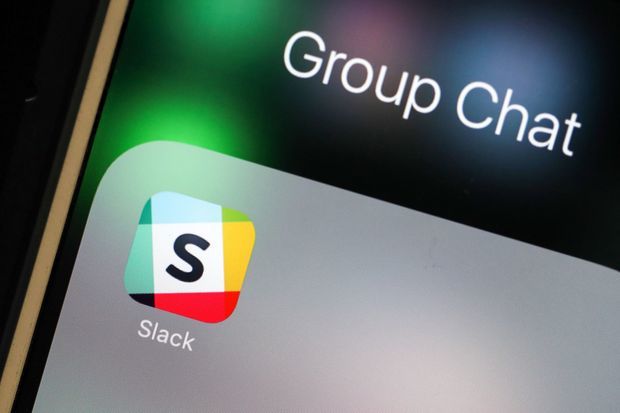
▲ Image from: Wall Street Journal
What are the ways to get inspiration in peacetime?
Lu Zhouxing: Listen to podcasts, read miscellaneous books, read news, and communicate with friends who are familiar or unfamiliar.

▲ Image from: iMore
Can you share some reading methods?
Lu Zhouxing: I often read books to satisfy my curiosity, or to find insights from my book. I am not obsessed with reading the book, so the list I am reading is often very long (laugh)
Can you talk about your favorite reading tool?
Lu Zhouxing: Reeder, a small and beautiful RSS reading app. It is designed to be simple enough to help users focus on reading.

author: Lu Xinyu & amp; Yaoying

Past review:
Interview with Jane Yue: Improve 318 sites for the best “reading mode”
Interview with “Efficient Control” Tula Ding: An app is more versatile than just “aggregating”
Interview with Liu Wei and Chen Xi: Two Shanghainese, two “garbage classification” product ideas< /p>